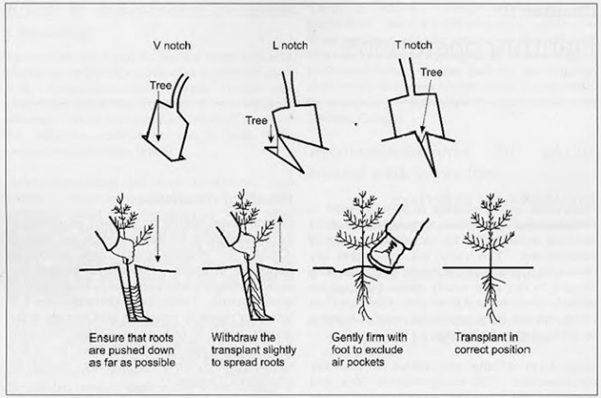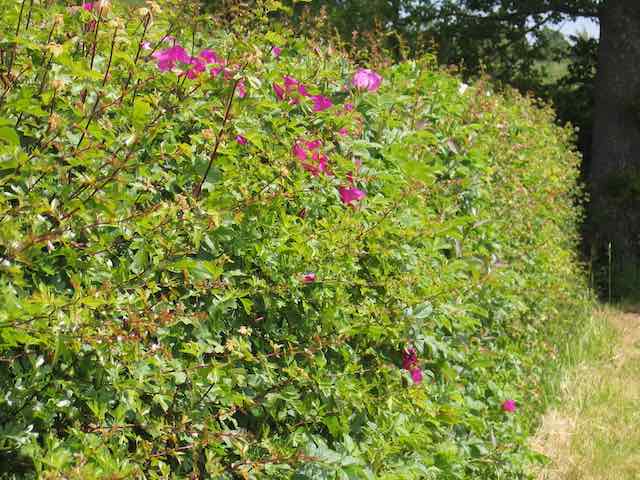Description
Our bare root hedging pack contains a mix of plants to produce a haven for Autumn foragers. This fun set of 25 hedging plants provides a valuable habitat for native animals, birds and insects as well as providing some delicious treats for you in the Autumn. Most of the fruits are used to create jams, jellies, sauces and drinks with the exception of the hazel nuts and June berries which can be eaten straight from the hedge.
The images of native hedge fruit above and below are in the following order: Hawthorn, Blackthorn, Hazel, Elder x 2 (flowers & berries), Crab Apple, Dog Rose and June Berry. You can read more about each hedge plant under the image below. All hedge plants are supplied as 40-60cm bare root slips and are supplied in the dormant Autumn/Winter season.
Our Plants - We run a relatively small, independent nursery so our bare root plants are lifted to order rather than lifted and stored. Plants which are lifted to order are quicker to establish in Spring as their root systems spend less time out of the ground. Our plants are also grown in an exposed North West location and have had to deal with all nature can throw at them. They are supplied as tough, top quality bare root plants that will thrive on any site.
Each 25 plant pack contains the following:
7 x Hawthorn - Crataegus Monogyna
A dense, thorny native hedge plant. Hawthorn leaves can be added to an early Spring salad while the leaves are still tender. Hawthorn also produces red haws in Autumn which are used to make a jelly or homemade wine.
6 x Blackthorn (sloe) - Prunus Spinosa
The blackthorn is another attractive, native, thorny hedge. The blackthorn produces dusky purple sloes which make a delicious Christmas tipple when pricked with a pin and left to infuse in a bottle of gin.
2 x Hazel - Corylus Avellana
Common hazel is a decidious shrub and an important hedgerow plant typical in the field boundries of lowland England. The Hazel produces delicious hard shelled hazel nuts.
2 x Elder - Sambucus nigra
Elder is a fast growing flowering hedge plant common in native hedgerows and scrubland in Northern Europe. The scented white flowers are used to make elderflower cordial while the berries are used to make jam, jelly, chutney and Pontack sauce.
2 x Wild Crabapple - Malus Syvestris
Crab apple is native to most European countries and though rarer these days was a traditional addition to farmland hedges. It is thought to be the most important ancestor of the cultivated apple. Crab apples are used to make sweet crab apple jelly.
2 x Wild Pear - Pyrus Communis
The Wild Pear is a deciduous tree from southern, central and western Europe. Now naturalized in Ireland and the UK, it generally grows to a medium sized tree, but is also suitable to be trained as a hedge. The small hard fruits of the Wild Pear are eaten by birds such as thrush and blackbirds but can also be used like crab apples to make a sweet jelly.
2 x Dog Rose - Rosa Canina
The Dog Rose is commonly seen scrambling through cottage style hedges adding colour with it's (usually) pink flowers. The Dog Rose produces bright red rose hips in Autumn which are used to make syrup, tea and marmalade.
2 x Snowny Mespilus (June berry) - Amelanchier Lamarckii
The Juneberry is a decidious flowering shrub which makes an ideal addition to a fruiting hedge. It produces white star shaped flowers followed by fruits which turn from dark red to purple when ripe. The fruits are edible and have a sweet apple flavor and are delicious in pies and preserves.
When The Plants arrive
When your plants are delivered, bare rooted plants normally arrive inside a box with plastic bags over the roots and should be treated carefully. It’s essential that they’re not allowed to dry out or be exposed to frost. The bags should be kept standing up in a sheltered area away from wind etc., The quicker the hedge is planted the better. If you can’t get out and plant the bare rooted hedging within a couple of days, the plants should be removed from the bags and heeled in (stood upright in a trench and the roots covered with soil).
Spade Method (Also known as Slit Planting)
This entails cutting a slit in the ground and holding it open with a spade whilst the roots of the plant are carefully inserted and spread downwards.

Check out our blog post on "How to plant a bare root hedge" here.










